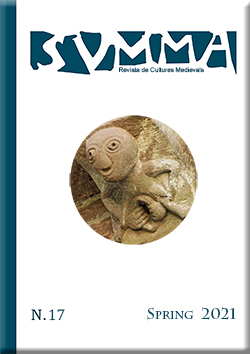Vidal’s cantigas to a Jewess: Intercultural Love Relationships in Medieval Iberia
DOI:
https://doi.org/10.1344/Svmma2021.17.4Abstract
From the second half of the twentieth century onwards, contacts between the three Iberian cultures – Jewish, Muslim, and Christian – have been addressed from the point of view of what has come to be known as ‘convivencia’ [coexistence] (Castro 1948; Sánchez Albornoz 1956). At the same time, studies devoted to the Arabic, Hebrew, and Christian literatures of the same period have incorporated similar considerations (Bossong 2010; Paden 2005). On this basis, the present article examines the inclusion of the compositions of the troubadour known as Vidal in the Galician-Portuguese songbooks. On the one hand, some of their formal and thematic aspects can be seen as proof of the poet’s effort to assimilate the Galician-Portuguese lyric repertoire, thus ensuring a place for him in the poetic compilation; on the other, the fact that in the rubric he is referred to as a “Jew” and his lady as a “Jewess” implies that assimilation was not perceived as absolute, as certain areas, such as religion and love/ sexual/ marriage relations, regarding which they both were identified as members of a religious and social minority still remained off-limits.
Downloads
Published
Issue
Section
License
Copyright (c) 2021 SVMMA. Revista de Cultures Medievals

This work is licensed under a Creative Commons Attribution-NonCommercial-NoDerivatives 4.0 International License.
The authors retain rights and grant the journal right of first publication of the work.
The author (s) to retain the publishing rights without restrictions, only recognition of first publication.
SVMMA Revista de Cultures Medievals is licensed under a Creative Commons Attribution-NonCommercial-ShareAlike 3.0 Spain License















